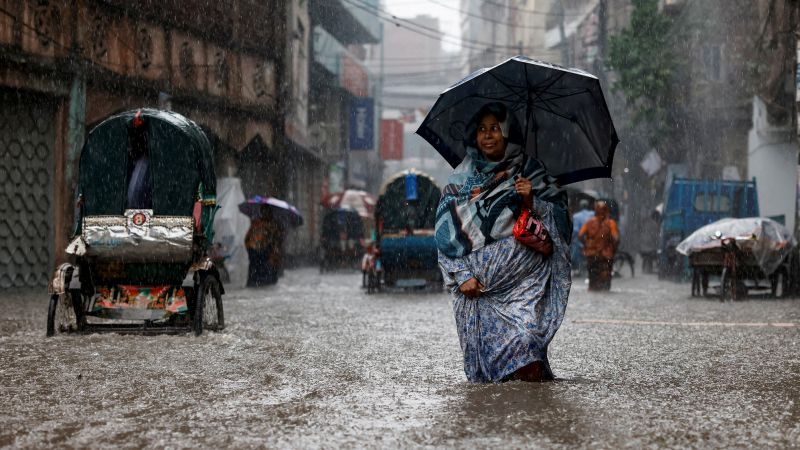Hong Kong
CNN
—
Extreme heat and flooding are set to deal a massive blow to the global fashion industry, with four of the world’s top garment producing countries at risk of missing out on $65 billion in earnings by 2030, according to a study from Cornell University and investment manager Schroders.
Bangladesh, Pakistan, Vietnam and Cambodia are seen to be particularly at risk, with a 22% drop in earnings from exports — and wider economic hit — projected by the end of the decade, according to the findings, which were released Wednesday.
Fashion brands that source extensively in these countries should alter work hours and ensure workers get enough rest and hydration in response to the predicted disruption, according to researchers from Schroders and Cornell’s Global Labor Institute.
Nearly 1 million fewer jobs would be created collectively as productivity slows because of the expected impact of adverse weather, they said.
The four Asian countries were chosen for study because of their roles as industry powerhouses. Together, they account for 18% of global apparel exports, roughly 10,000 clothing and footwear factories and more than 10.6 million manufacturing workers.
But the locations are also deeply vulnerable to the climate crisis. Major garment manufacturing centers including Dhaka, Phnom Penh, Karachi, Lahore, Ho Chi Minh City and Hanoi are already confronting extreme heat and humidity, the authors noted.
“All of these cities are also likely to experience significant flooding,” they said.
Pakistan, especially, is no stranger to extreme weather, with more than one third of the country underwater last year during its worst floods in history.
Like elsewhere, Pakistan and Bangladesh have also seen heat waves in recent months, with temperatures soaring above 40°C (104°F) for many days during the spring and summer.
Using coastal and river flooding data, as well as temperature readings, the team from Cornell and Schroders said it had projected how different scenarios would affect manufacturing workers.
The team said its cost estimates of $65 billion by 2030 were based on a “business as usual” scenario amid high heat and flooding, if no measures are taken. If factory owners proactively take steps to help lower heat stress for workers, they may be able to avoid some of the projected lost earnings, according to the study.
The first scenario includes the assumption that heat stress will cause considerable changes in worker productivity. For example, output may decline by about 1.5% for each 1°C increase in the “wet-bulb globe temperature,” a measure of heat stress, according to the report.
The study’s authors have urged businesses and regulators to protect workers by treating extreme weather events as serious health hazards, with the provision of paid leave and the right to suspend work.
Fashion brands should also consider helping suppliers relocate their facilities to nearby, lower-risk locations, they suggested.
Anyone tempted to “cut and run” should think twice, according to the researchers. They said businesses looking to move suppliers out of these locations entirely would “struggle to build the large-scale capacity they benefit from in South and Southeast Asia.”
“Climate ‘loss and damage’ for manufacturers and workers are treated by brands as externalities — someone else’s problem,” Jason Judd, executive director at Cornell’s Global Labor Institute, said in a statement.
“Workers need these investments now because extreme heat standards and flood protections are non-existent.”
Sumber: www.cnn.com






